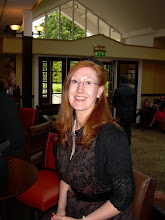 This exhibition, at Falmouth Art Gallery, was curated by Anne Anderson, whose work on the Brotherhood of Ruralists has recently caught my attention. This exhibition features Samuel Palmer, who in the 1820s turned his back on London and the urban scene to consider the countryside instead, surrounded by ‘The Ancients’, likeminded painters with a "back to nature" ethic. As the exhibition blurb points out, in the 1920s the painter Graham Sutherland did something similar, and in 1975 the Brotherhood of Ruralists (a name with a self-conscious echo of the Pre-Raphaelite Brotherhood) did something similar, retiring to Bodmin to paint, as did the PRB, "truth to nature".
This exhibition, at Falmouth Art Gallery, was curated by Anne Anderson, whose work on the Brotherhood of Ruralists has recently caught my attention. This exhibition features Samuel Palmer, who in the 1820s turned his back on London and the urban scene to consider the countryside instead, surrounded by ‘The Ancients’, likeminded painters with a "back to nature" ethic. As the exhibition blurb points out, in the 1920s the painter Graham Sutherland did something similar, and in 1975 the Brotherhood of Ruralists (a name with a self-conscious echo of the Pre-Raphaelite Brotherhood) did something similar, retiring to Bodmin to paint, as did the PRB, "truth to nature".This exhibition combines the work of all of these painters, together with some wonderful Blake etchings. Indeed, Sutherland’s "Pastoral" (1930) is an etching which is remarkably resonant of Blake, in which the trees appear as if they could at any moment reincarnate themselves as
 monsters – the Gothic menace of nature is all around in this exhibition, whether more obviously, such as in Sutherland’s "Green Tree Form" (1940), left, where the tree seems to have an animal life, or hidden in the pastel fantasy of Graham Ovenden’s "Spring Morning, Wiltshire" (1984).
monsters – the Gothic menace of nature is all around in this exhibition, whether more obviously, such as in Sutherland’s "Green Tree Form" (1940), left, where the tree seems to have an animal life, or hidden in the pastel fantasy of Graham Ovenden’s "Spring Morning, Wiltshire" (1984).I was particularly taken with Robin Tanner’s "Christmas 1929", a wintry village scene which manages to be both homely, familiar and comforting, and sinister, as though menace lurks in the rural hamlet. Indeed, there is a fairytale aspect to many of these paintings and drawings – perhaps when people concentrate on nature to such an extent, it becomes something quite other than what we first think it is. And the idea that nature is pastoral, calm, and even our right to appreciate, is one of town-dwellers, I suspect – "Nature red in tooth and claw" is much more the real thing.
Sir Peter Blake, acolyte of the Ruralists, only features once, with a print entitled "Faery", which is simply a long-haired, naked girl in a field, but again there is something unsettling about this child apparently at one with nature – something in her eyes or stance, perhaps.
The common thread here is the engagement with the rural landscape, but it is a very mixed collection: many of the exhibits are very much of their time, displaying contemporary influences, and while some have a photographic precision (such as most of Graham Ovenden’s works), others seem largely representative (Paul Nash’s "Druid Landscape", for example), and others more impressionistic. But there is much here to admire, and much to think about.











No comments:
Post a Comment